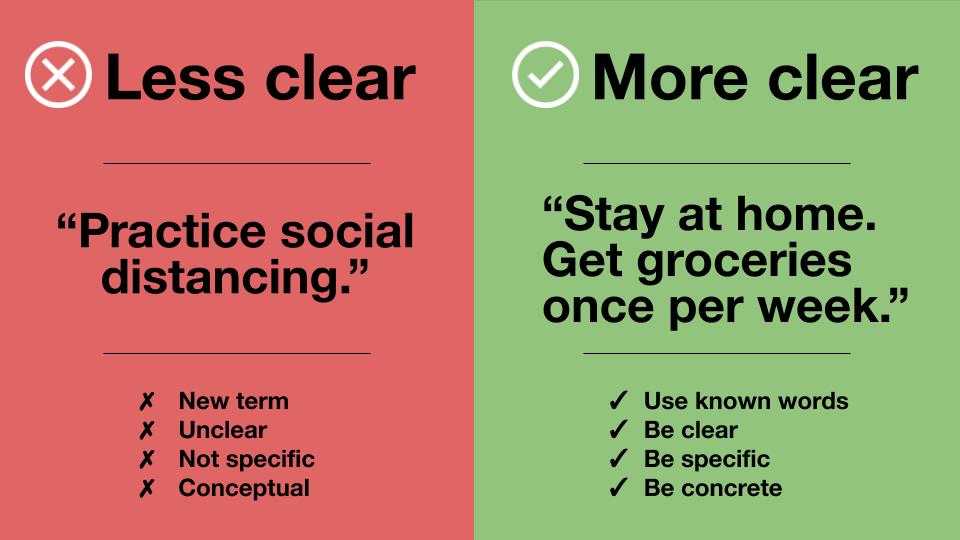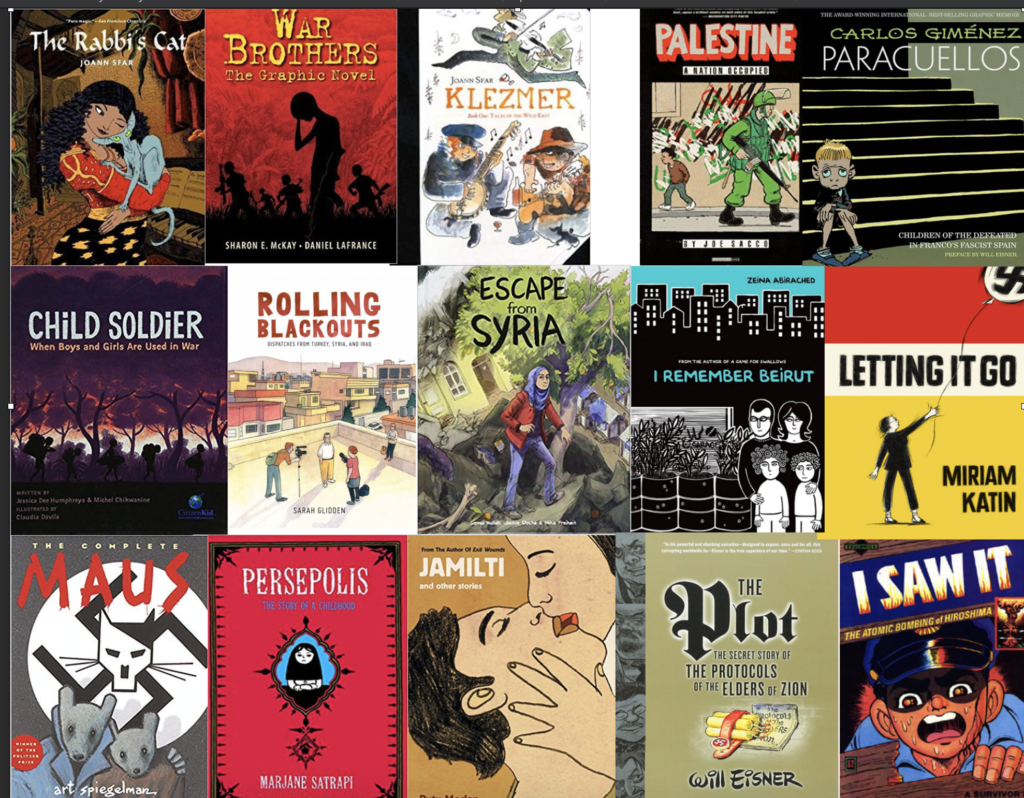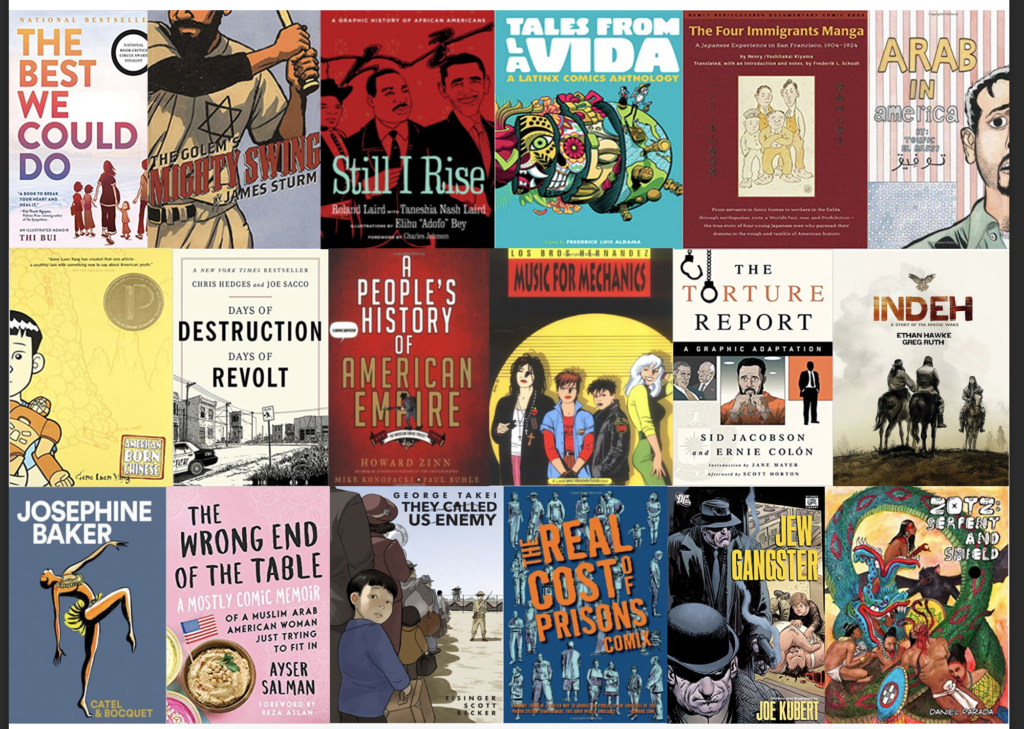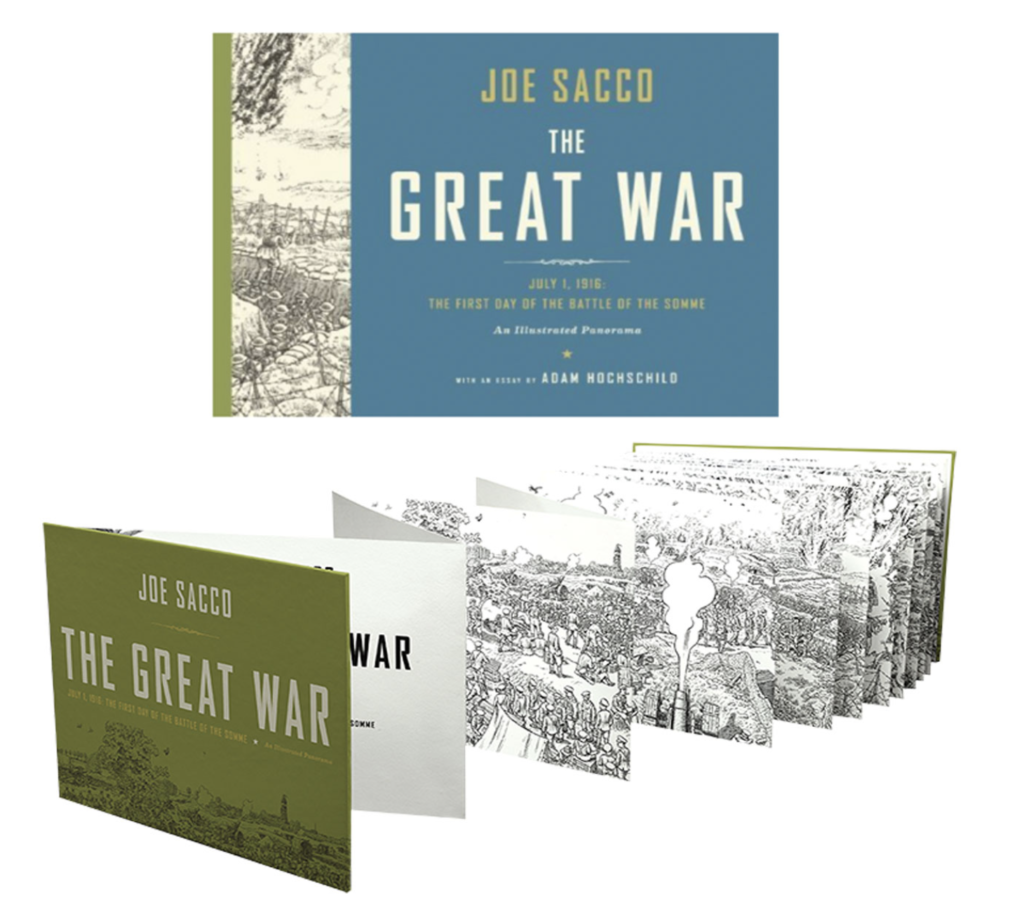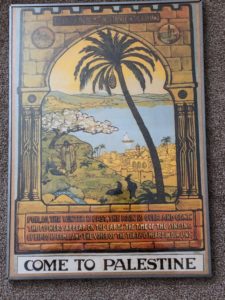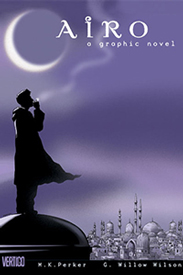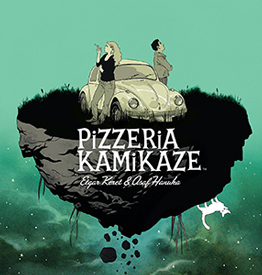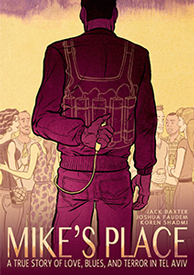One of the first examples of a graphic narrative about an immigrant’s experience is literature is The Four Immigrants Manga (1931), written and illustrated by Henry Kiyama, 1885-1951). The book went out of print and was lost until it was translated into English by Frederik L. Schodt in 1999. The book is a memoir by Mr. Kiyama of his experience coming to San Francisco in 1904 to study art, an d describes his (and his friends’s experience) navigating western culture through the Meiji era sensibilities, the San Francisco Earthquake and growing racism between Japanese immigrants and white Americans, as well as Chinese immigrants. We are provided an opportunity to read and see the life of an immigrant through their eyes about their experiences, written in their time,100 years ago and not through the lens of the sensibilities of contemporary society and culture. It is at once fascinating, interesting and honest and shows the tension between the white population and all Asians living there, unwilling to recognize the difference between Japanese and Chinese culture, and language. Jason Thompson describes this manga is “frozen in time with diligent documentary-style realism, with cynical humor and cartoony cheer”. You can read this book here: https://tinyurl.com/vxaompu}.
Part of the beauty and power of this book is that it is authentic and honest. Writers and artists (sometimes one in the same) have chosen this media for a number of reasons, including the fact that they are not as costly to produce, distribute, translate than movies, theater, or other action-based media. More importantly, they remain closer to the experiences, sensibilities, and knowledge of the narrator/artist, without the input of studios and producers willing to change a true narrative to one that is inspired by actual events. Authors can use complete realism in telling their stories, such as the March trilogy about the life of Congressman John Lewis, or Persepolis by Marjane Satrapi. Or authors can employ a more fantastical approach, such as Art Spiegelman’s Pulitzer Prize winning Maus where his father’s experiences during the Holocaust are described by animals characters without any dilution to his story and experiences.
Over the past 15 years or so, authors and artists from around the world have published a plethora of graphic memoirs, biographies and histories about their own experiences, or those of their family, friends, community or nation.Stories about where they came from (There) and where they ended up (Here). We know from history that people generaly do not leave their homes to become refugees in foreign lands, far away from their communities, and cultures. They flee to escape natural disasters such as floods, fires, and earthquakes. But more often, they flee to escape war, violence, racism, poverty, and hate, and seek opportunities to be able to live in peace, to work, and raise a family. Being a stranger in a strange land is no piece of baklava. They are faced daily struggles learning new languages, laws, customs, cultures, foods, and as well as other newcomers trying to fit in. The people and the cultures that they bring with them are more often than not misunderstood which lead to ignorance, fear and hate.
In my personal collection, I have stores from There- books about and by authors from There: Lebanon, Syria, Israel, Palestine, Libya, Iraq, Spain, Iran, Yugoslavia Eastern Europe, and Here: immigrants and communities from the Middle East, Vietnam, China, South America, Africa, and China. I have stories about the Holocaust, Racism, Anti-Semitism, refugees escaping war and terrorism, as well as those caught up in wars. Stories about the African-American, Latinx, Asian-American, and Jewish-Americans. Some of the books are aimed towards primary school, some high school, some to college and beyond. What they share is an authenticity and direct honesty of the story-teller sharing and exposing their story, their pain and often their success in surviving. And as readers, we read and learn, and hopefully acquire knowledge and empathy that reduce our own ignorance and fears.
I am often asked why comics, why graphic literature. As I have written, there are many reasons, including relatively low production costs, they promote literacy and critical thinking, and more. But there are other aspects too. I recently read Comics as Poetry, a lovely analysis of a 4-panel comic by cartoonist Lynda Berry . The analysis was written by Ivan Brunetti in the PARIS REVIEW. Below are some excerpts:
Comics are often likened to short stories and novels, or (more improbably) animated films, but in a sense they are also a kind of poetry, an incantation beckoning us to enter their world. The simplicity of their superficial concision can reveal surprising density, layers, and multivalence. In a poem, lines might form and fill a stanza, which literally means “room”; and so it is with comics, where panels could likewise be thought of as stanzas. Rows, columns, and/or stair-steps of panels, in turn, structure a page (or an entire story) of comics and give it its particular cadence. Even the simplest grid tattoos its rhythmic structure onto the page.
……Barry bestows upon all of us, readers and artists alike, a similar gift. This is from her most recent book, Making Comics: “Stories that lend themselves to comics can be found in a certain kind of remembering I sometimes call an image. It’s a sort of living snapshot, the kind of memory you can turn around in.”…
…This is as elemental as comics get: one character in one space, in one continuous action, spanning just a few panels, all housed within an evenly sectioned grid. However, even an element contains vast inner spaces and subatomic particles elusively whizzing and whirring within it, and this seemingly simple strip is, in fact, quite complex and nuanced….

